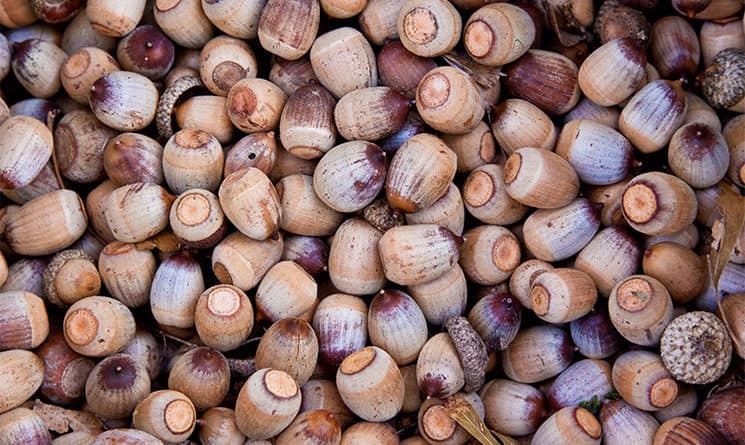Editor’s note: The University of New Hampshire Cooperative Extension provides weekly gardening columns in which Jeremy DeLisle answers questions from local gardeners.
Q: I’ve noticed that there are lots of acorns this year. Why is that? — Peter B of Antrim
A: Much of New Hampshire is seeing a great crop of acorns this year. Mast crops are typically defined as the fruit of forest trees. There are a number of factors that contribute to heavy mast crops. Climatic factors such as wind, late frost, prolonged rain, humidity, and temperatures can all affect flowering and pollination, and all of these must cooperate for fertilization to occur. Only once this has happened is there a chance that a seed will mature and eventually grow into a tree. Acorn production also varies from tree to tree, so genetics also play an important role in acorn production.
Percentage-wise, very few acorns will survive to grow into seedlings. When considering all of the environmental factors, the fact that a huge number of fruits are lost to early abscission (drop), and that acorns serve as a fundamental food source for so many organisms, it’s pretty amazing that a few of them actually survive and grow into the mighty oaks we know and love.
Animals, insects, birds, and microorganisms (mainly fungi) all use acorns as a food source. Also of interest, white oaks mature seeds in one season, while red oaks require two. It is generally agreed upon that oaks and other mast-producing trees must store resources for a time between large crops. Therefore, it makes some sense that after a year or two of heavy production, depending on the species, we might expect a period of lower production until energy reserves are built back up. Extreme drought conditions could play a role in how quickly trees are able to replenish reserves.
Animal populations also fluctuate with mast crops. In the years immediately following a good nut crop there is often an increase in the small mammal populations like squirrels, chipmunks, and mice. In these years, very few acorns will have the opportunity to sprout before they are eaten. The years following will see a rise in the hawk and owl populations that feed on those small mammals, helping to balance out the small mammal population once more. Once populations of small mammals decline, the opportunity for subsequent crops of nuts to sprout and grow increases, and the cycle continues.
Jeremy DeLisle is the program coordinator for the UNH Cooperative Extension Education Center. The center answers questions about gardening and more at answers@unh.edu, or by calling 877-398-4769, Monday through Friday, between 9 a.m. and 2 p.m.

